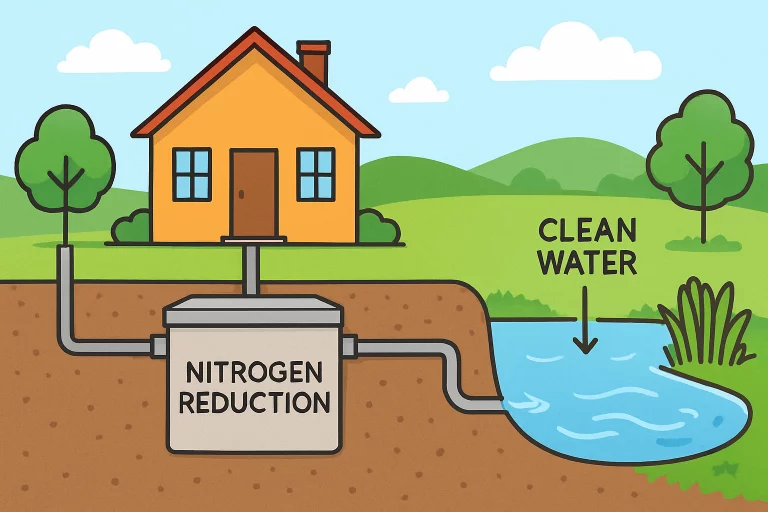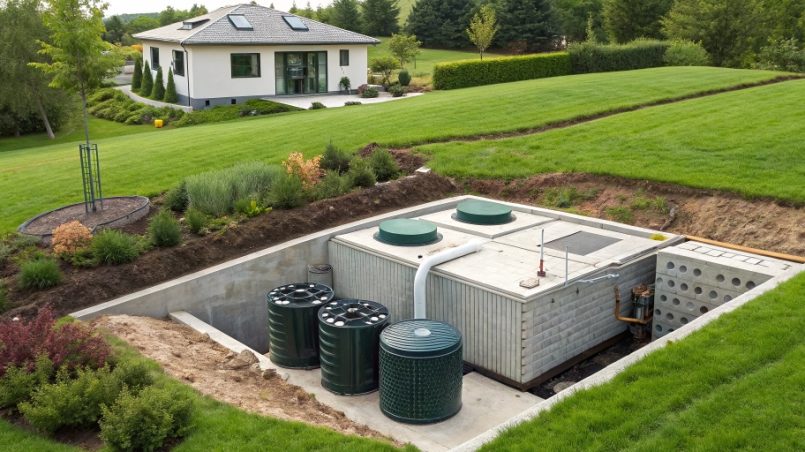Excess nitrogen leaching from conventional septic systems is a mounting concern for both homeowners and environmental advocates. When septic systems fail to adequately treat waste, nitrogen compounds—primarily in the form of nitrates—can seep into groundwater and eventually enter lakes, rivers, and oceans. Elevated nitrogen levels are a significant contributor to water quality degradation, fueling issues such as harmful algal blooms, declining aquatic biodiversity, and posing serious health risks to communities that rely on clean water. Not only are local ecosystems at risk, but so are recreation, fisheries, and even real estate values in affected areas.
Fortunately, innovative solutions are on the rise, with the nitrogen-reducing septic system leading the way. These systems employ advanced treatment processes specifically designed to intercept and neutralize nitrogen, preventing it from contaminating our waterways. By integrating advanced technologies into wastewater management, communities can protect habitats, comply with regulations, and preserve water sources. As nitrogen pollution impacts become clearer, local governments and communities are adopting comprehensive strategies—improving technologies, enacting policies, encouraging grassroots efforts, and leveraging natural processes—to ensure water safety and ecosystem resilience. This article explores these innovations from nitrogen removal systems to policy and community initiatives, demonstrating how a holistic approach supports sustainable water resources.
Understanding the Impact of Nitrogen Pollution
The consequences of unchecked nitrogen pollution from septic systems are particularly severe in regions that rely on groundwater supplies or are near sensitive coastal estuaries. Excessive nitrogen acts as a potent fertilizer for aquatic algae, leading to rampant algal blooms that block out sunlight and deplete oxygen in the water. This cascade of effects reduces water clarity, leads to unsightly and sometimes toxic blooms, and puts enormous strain on local wildlife, people, and economies. In some notorious cases, such as the “dead zones” in the Gulf of Mexico, the oxygen depletion caused by decaying algae renders vast swathes of water uninhabitable for important marine species. Such outcomes directly threaten local fisheries, tourism, and ultimately, the livelihoods of thousands of people. Furthermore, elevated nitrate levels in drinking water are linked to significant health risks, including methemoglobinemia or “blue baby syndrome” in infants. For all these reasons, managing and reducing nitrogen pollution from septic systems is a critical priority for maintaining ecosystem health, promoting community well-being, and ensuring environmental justice.
Innovative/Alternative Septic Systems
Traditional septic systems weren’t designed for nitrogen management, but technology has improved. Now, engineers and policymakers favor innovative/alternative (I/A) systems that actively remove nitrogen before water re-enters the environment. These advanced systems include multiple treatment stages—like aerobic chambers, recirculating filters, or denitrification units—to promote bacteria that convert nitrogen into nitrogen gas, which disperses safely. Some models have media beds for microbial growth, while others use sequencing batch reactors, membrane filters, or electrical ionization to break down nitrogen waste. Additionally, commercial septic systems are now being integrated naturally into this approach to enhance nitrogen removal. As a result, nitrogen output is much lower than conventional systems.
These upgrades are increasingly legal requirements in vulnerable areas. For example, Suffolk County, New York, mandates nitrogen-reducing systems for all new construction to restore local bays and protect drinking water. Policies like this recognize the link between groundwater, surface water quality, and onsite wastewater treatment.

Smart Monitoring Technologies
In the realm of wastewater management, prevention is just as crucial as treatment. Modern smart monitoring technologies have revolutionized how homeowners, municipalities, and service professionals monitor septic system health and function. Cutting-edge sensors and remote monitors are now commonly deployed at critical locations within tanks and drain fields. These devices track a range of parameters in real-time, including water flow rates, usage patterns, liquid levels, and the chemical composition of effluent.
Data from these sensors can be displayed on dedicated dashboards or sent directly to mobile devices, enabling ongoing surveillance and instant alerts if issues such as leaks, overloading, or treatment failures are detected. By spotting problems early, property owners and technicians can address them long before they escalate and cause serious environmental harm or expensive repairs. In systems with active nitrogen removal technology, smart monitoring ensures these advanced processes remain in proper working order. Ultimately, this means a longer system lifespan, higher compliance with environmental regulations, and greater peace of mind for everyone involved. For a closer look at next-generation septic monitoring and its benefits,
Nature-Based Solutions
Technological interventions are only one side of the equation—nature itself offers powerful methods for mitigating nitrogen runoff. Nature-based solutions involve the restoration, creation, or enhancement of landscapes that naturally filter and process nitrogen before it reaches open water. A prime example is wetland restoration, where degraded or drained wetlands are revitalized with native plants that not only provide essential habitat but also absorb and break down excess nutrients through their roots and associated microbial communities.
Another exciting approach gaining traction is the installation of engineered bioreactors. These are essentially trenches or beds filled with carbon-rich materials, such as wood chips, which stimulate bacteria to convert nitrogen in wastewater into nitrogen gas through anaerobic denitrification. When placed in strategic locations between septic drain fields and sensitive water bodies, bioreactors offer a low-maintenance, cost-effective solution for large-scale nutrient control.
Innovative projects on Cape Cod showcase the potential of these methods, as local organizations are transforming abandoned cranberry bogs into functional wetlands tailored to maximize nitrogen removal. This restores lost wildlife habitat, enhances resilience to stormwater, and significantly improves water quality.
Policy and Regulatory Initiatives
Comprehensive change requires strong leadership and forward-thinking policies. Across the U.S., government agencies are establishing stricter standards and incentive programs to drive the adoption of advanced, nitrogen-reducing septic technology, particularly in areas where aquifers, lakes, and estuaries are at greatest risk. Suffolk County’s recent regulations are a leading example, mandating the use of high-efficiency systems in new builds and offering homeowners grants and permitting incentives to encourage upgrades.
Other states and counties are introducing tiered compliance programs, educational support for local officials, and financial aid for low- to moderate-income households, so everyone can play a part in reducing nutrient pollution. These policies don’t only aim for better water quality—they foster public trust, spread awareness, and promote the shared responsibility of protecting vital natural resources for present and future residents.
Community Engagement and Education
Even advanced technology and policies require grassroots support to succeed in the long term, making outreach and education vital in nitrogen management. Municipalities, nonprofits, and local governments invest in workshops, demonstration projects, and online resources to help residents understand septic systems and their importance. Many regions offer grants, rebates, or low-interest loans to help homeowners upgrade to nitrogen-reducing systems. Nassau County’s SEPTIC program provides financial assistance to replace outdated systems, aiming to protect property values and water quality while ensuring no one is left behind. Public involvement through monitoring, stewardship, or sharing knowledge amplifies efforts and fosters cultural change for cleaner waterways.
Challenges and Future Directions
Progress in nitrogen management faces challenges, including high costs and technical barriers, particularly in rural or low-income areas. Retrofitting dense neighborhoods or difficult soils requires innovation and support. Public funding, oversight, and technical help are vital for compliance and improvement. Moving forward, scalable tech like bioengineering, remote sensing, and ecosystem modeling will enhance nitrogen removal. Policymakers should streamline permit processes, foster collaboration, and align regulations with the needs of water quality. Public education and community effort are essential for progress. Ongoing research on new methods promises a future with clean water and thriving communities, and ecosystems.



